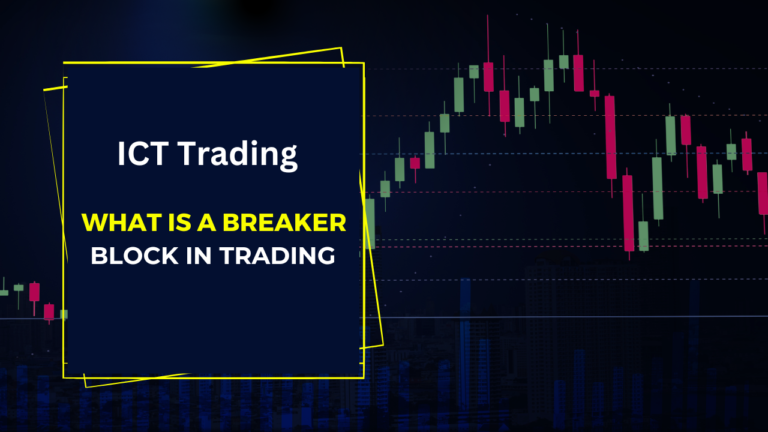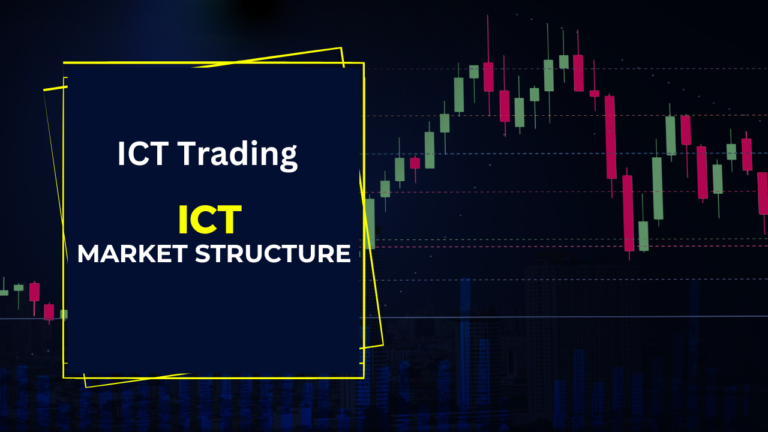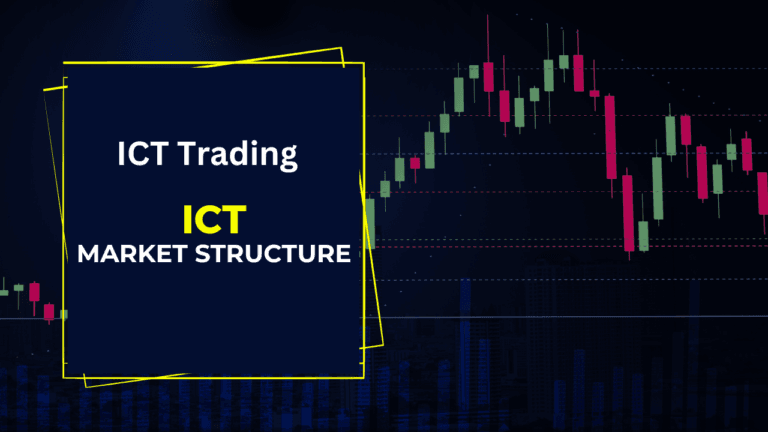What is an ICT Breaker? Key Benefits Explained

In the world of trading, ICT (Inner Circle Trading) has emerged as a powerful strategy that allows traders to navigate the complexities of financial markets more effectively. One of the key concepts within ICT is the ICT Breaker, a tool designed to identify significant market reversals and breakouts. This article will delve into what ICT is and how the ICT Breaker works, providing a comprehensive guide for both novice and experienced traders.
What is ICT?
ICT, or Inner Circle Trading, is a trading methodology developed by Michael J. Huddleston. This approach focuses on understanding market dynamics through the lens of price action and market structure. The core philosophy of ICT is to provide traders with insights into how institutions operate in the markets, allowing individual traders to make informed decisions based on this knowledge.
Key Principles of ICT:
- Market Structure: ICT emphasizes the importance of understanding the market’s structure, including support and resistance levels. By identifying these key areas, traders can better predict potential price movements.
- Price Action: ICT traders rely heavily on price action analysis. This involves studying candlestick patterns, volume, and market sentiment to anticipate future price movements.
- Institutional Order Flow: A fundamental aspect of ICT is understanding how large institutions influence market behavior. Traders learn to recognize the buying and selling patterns of these institutions to align their trades with the overall market direction.
Benefits of Using ICT:
- Enhanced Decision-Making: By understanding market structure and institutional behavior, traders can make more informed decisions, reducing the chances of emotional trading.Improved Risk Management: ICT provides tools for setting appropriate stop-loss orders and profit targets, helping traders manage risk effectively.Greater Market Insight: Traders gain a deeper understanding of market movements, leading to more strategic trading decisions.
Understanding the ICT Breaker
The ICT Breaker is a pivotal concept within the ICT methodology, designed to help traders identify potential market reversals or breakouts. It serves as a guide to recognize when the market is likely to change direction, providing traders with actionable insights.
Definition and Purpose: The ICT Breaker is defined as a price level that, when breached, indicates a shift in market sentiment. This concept is essential for traders looking to capitalize on price movements by identifying key levels of support and resistance.
Key Components of an ICT Breaker:
- Price Action: The ICT Breaker relies on specific price action patterns that indicate a potential breakout or reversal. Traders need to analyze the price movements leading up to the breaker level.
- Market Structure: Understanding the overall market structure is crucial. The ICT Breaker often aligns with major support or resistance levels, which adds credibility to its signals.
- Volume Analysis: High trading volume accompanying a breakout can confirm the strength of the move. Traders should look for increased volume when the price approaches the ICT Breaker level.
How the ICT Breaker Works:
- When the price approaches the ICT Breaker, traders monitor for confirmation signals, such as strong candlestick patterns or increased volume.
- If the price breaks above a resistance level, it may indicate a bullish breakout, while a break below a support level could signal a bearish reversal.
- The ICT Breaker helps traders avoid false breakouts by requiring additional confirmation before entering trades.
Key Components of an ICT Breaker
To effectively utilize the ICT Breaker in trading, it’s essential to understand its key components. Each element plays a vital role in identifying potential market reversals and breakouts, allowing traders to make informed decisions.
Price Action
Price action refers to the movement of the market price over time. It is a crucial component of the ICT Breaker, as it helps traders analyze the market’s behavior before and after it approaches the breaker level. Traders should pay close attention to specific candlestick patterns, such as:
- Engulfing Patterns: These indicate a potential reversal when a larger candle fully engulfs a smaller one.
- Doji Candles: A doji signifies indecision in the market, often preceding significant price moves.
- Pin Bars: These show rejection of a certain price level and can signal a reversal.
Market Structure
Understanding the market structure is vital when identifying the ICT Breaker. Key concepts include:
- Support Levels: These are price points where buying interest is strong enough to prevent the price from falling further. A break below a support level could indicate a bearish market sentiment.
- Resistance Levels: These are points where selling interest prevents the price from rising higher. A break above a resistance level suggests bullish momentum.
Volume Analysis
Volume measures the number of shares or contracts traded in a given period. It is an essential component of the ICT Breaker, as it helps confirm the strength of price movements. High volume during a breakout indicates strong buying or selling pressure, which can validate the move. Here’s how to analyze volume effectively:
- Increased Volume on Breakouts: When the price approaches the ICT Breaker level, traders should look for a surge in volume. This increase suggests that the breakout is more likely to hold.Decreased Volume on Pullbacks: If the price retraces after a breakout with lower volume, it may indicate that the initial move was genuine and that the trend could continue.
How the ICT Breaker Works
Understanding how the ICT Breaker works is crucial for successful trading. The mechanism behind it involves recognizing critical price levels, confirming breakouts, and managing trades effectively.
Identifying Key Levels
The first step in utilizing the ICT Breaker is to identify key support and resistance levels on your chart. This involves:
- Chart Analysis: Use historical price data to spot areas where the price has reversed or consolidated. These levels often serve as future ICT Breaker points.
- Drawing Trend Lines: Connecting the highs and lows of the price action can help visualize potential breakout areas.
Analyzing Price Action
Once key levels are established, traders must analyze price action as it approaches these levels. Look for the following signals:
- Reversal Patterns: Identify candlestick patterns that indicate potential reversals, such as head and shoulders or double tops/bottoms.
- Momentum Indicators: Utilize tools like the Relative Strength Index (RSI) or Moving Average Convergence Divergence (MACD) to gauge the strength of the price movement.
Setting Entry and Exit Points
When a price level is breached, it’s essential to set clear entry and exit points:
- Entry Point: Enter a trade once the price breaks above a resistance level or below a support level, confirming the breakout with increased volume.
- Stop-Loss Orders: Set a stop-loss order slightly below the breakout point for long trades or above for short trades to manage risk effectively.
- Profit Targets: Establish profit targets based on previous market behavior, such as the next resistance level for long trades or the next support level for short trades.
Monitoring Market Conditions
The effectiveness of the ICT Breaker is highly dependent on market conditions. Traders should keep an eye on broader market trends and news events that might impact price movements. Adapting to changing conditions will help you manage trades more effectively and avoid potential losses.
How to Use the ICT Breaker in Trading
Using the ICT Breaker effectively can enhance your trading strategy, allowing you to capitalize on significant market movements. Here’s a step-by-step guide on how to integrate the ICT Breaker into your trading routine:
Identifying Key Levels
The first step in using the ICT Breaker is to identify critical support and resistance levels on your trading chart. Here’s how to do it:
- Analyze Historical Data: Look at past price movements to find areas where the price has consistently bounced or reversed. These levels are essential as they will likely serve as your ICT Breaker points.
- Mark the Levels: Use horizontal lines or zones to mark these key levels on your chart. This will help you visualize potential breakout areas.
Analyzing Price Action
Once you have identified the key levels, the next step is to analyze the price action around these levels:
- Look for Confirmation Patterns: Watch for candlestick patterns that suggest a potential reversal or continuation, such as pin bars, engulfing patterns, or double tops/bottoms.
- Volume Confirmation: Pay attention to volume. A significant increase in volume at the breakout point can confirm the strength of the price movement. If the price approaches the ICT Breaker with high volume, it adds credibility to the potential breakout.
Setting Entry and Exit Points
After confirming the breakout, it’s crucial to establish your entry and exit points:
- Entry Point: For a bullish trade, consider entering just above the resistance level; for a bearish trade, enter just below the support level. This allows you to catch the move as it develops.
- Stop-Loss Orders: Always use stop-loss orders to protect your capital. For long positions, place the stop-loss slightly below the breakout level, and for short positions, place it above the breakout point.
- Take Profit Levels: Determine where to exit your trades. You can set profit targets at previous highs or lows or use a risk-reward ratio, such as aiming for a 2:1 reward compared to the risk.
Risk Management Strategies
Effective risk management is critical when using the ICT Breaker. Here are some strategies:
- Position Sizing: Determine how much of your capital you are willing to risk on each trade. This should be a small percentage of your total trading capital, usually around 1-2%.
- Adapting to Market Conditions: Stay aware of broader market trends and news events that might impact your trades. Be ready to adjust your strategy as necessary.
Common Mistakes to Avoid
While using the ICT Breaker can be highly effective, several common mistakes can undermine your trading success. Here are some pitfalls to watch out for:
Ignoring Confirmation Signals
One of the most significant mistakes traders make is entering trades without waiting for confirmation signals. Always ensure that you see a clear breakout above resistance or below support, accompanied by strong price action and volume.
Overtrading
Traders sometimes become overly eager and enter too many trades based on minor price fluctuations. It’s crucial to stick to your trading plan and only trade when the conditions align with the ICT Breaker strategy.
Neglecting Risk Management
Failing to implement proper risk management can lead to significant losses. Always set stop-loss orders and determine your position size before entering a trade to protect your capital.
Focusing Solely on the ICT Breaker
While the ICT Breaker is a powerful tool, relying solely on it without considering other market indicators can be risky. Incorporate other analysis techniques, such as trend analysis, to enhance your overall strategy.
Overlooking Market Conditions
Market conditions can significantly impact the effectiveness of the ICT Breaker. Failing to consider factors like economic news releases, overall market sentiment, or changes in volatility can lead to poor trading decisions. Stay informed about current events that might affect market movements.
Conclusion
In conclusion, the ICT (Inner Circle Trading) Breaker is a valuable tool for traders looking to enhance their market analysis and decision-making. By understanding the key principles of ICT and effectively using the ICT Breaker, traders can identify significant market reversals and breakouts.
To maximize the effectiveness of the ICT Breaker, it is essential to:
- Identify Key Levels: Recognize support and resistance levels to set clear entry and exit points.
- Analyze Price Action: Use candlestick patterns and volume analysis to confirm breakout signals.
- Implement Risk Management: Protect your capital through proper position sizing and stop-loss orders.
Read More Boost Trading with MMBM ICT
Frequently Asked Questions
What is the ICT Breaker?
The ICT Breaker is a trading tool developed as part of the Inner Circle Trading methodology. It helps traders identify potential market reversals or breakouts by analyzing price action, market structure, and volume.
How do I identify key levels for the ICT Breaker?
Key levels can be identified by analyzing historical price data to find areas of support and resistance. Mark these levels on your chart to establish potential breakout points.
What should I do if the price approaches the ICT Breaker without confirmation?
If the price approaches the ICT Breaker without clear confirmation signals (such as strong candlestick patterns or increased volume), it’s advisable to wait for further confirmation before entering a trade.
Can I use the ICT Breaker in any market?
Yes, the ICT Breaker can be applied to various financial markets, including stocks, forex, and commodities. However, ensure you adapt your analysis to the specific characteristics of each market.
How can I improve my trading strategy using the ICT Breaker?
To enhance your trading strategy with the ICT Breaker, focus on consistent practice, stay informed about market conditions, and integrate additional analysis techniques to complement the ICT methodology.





